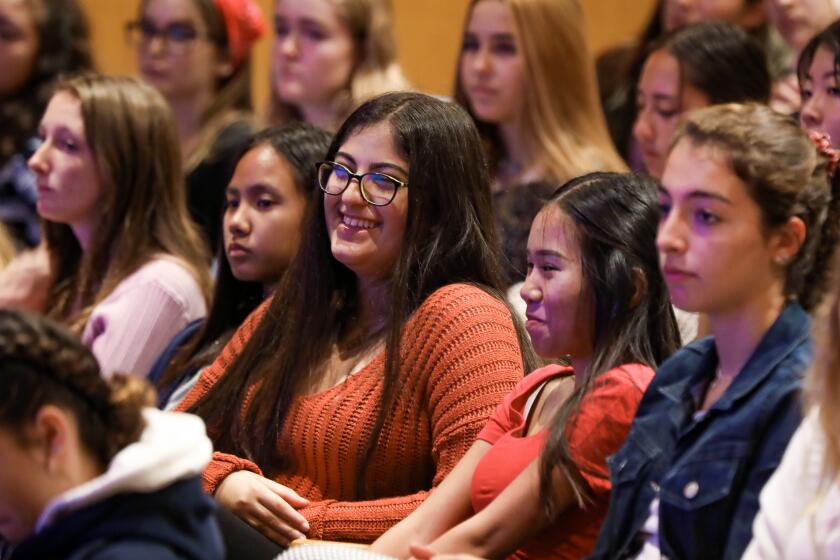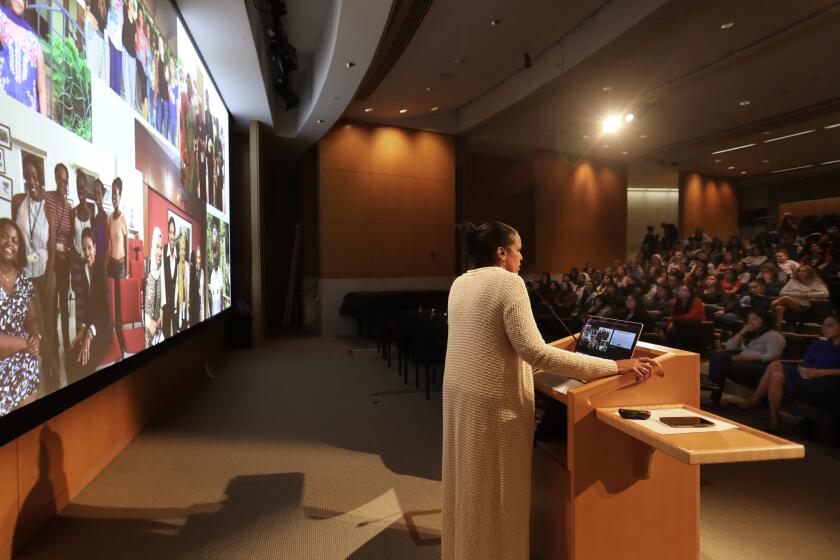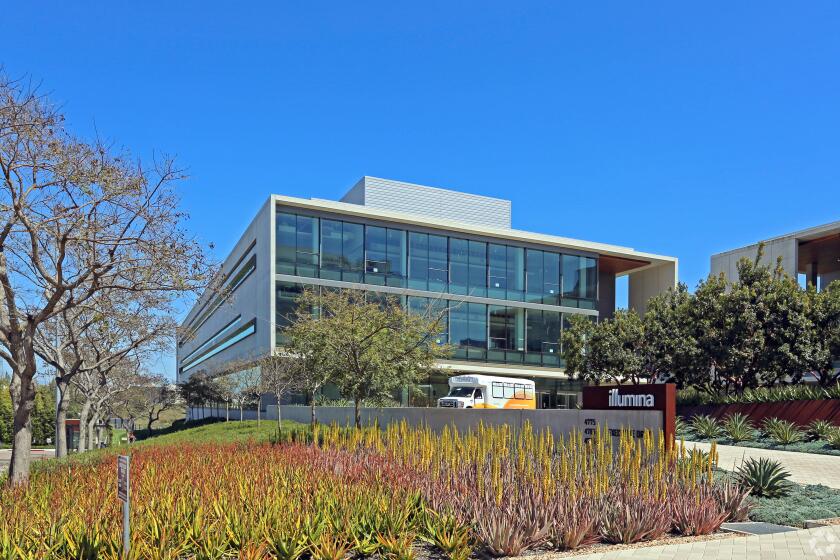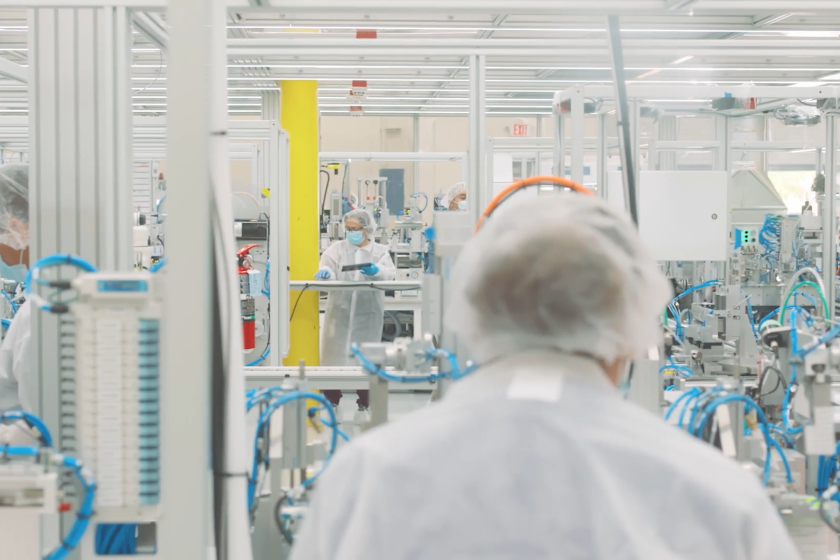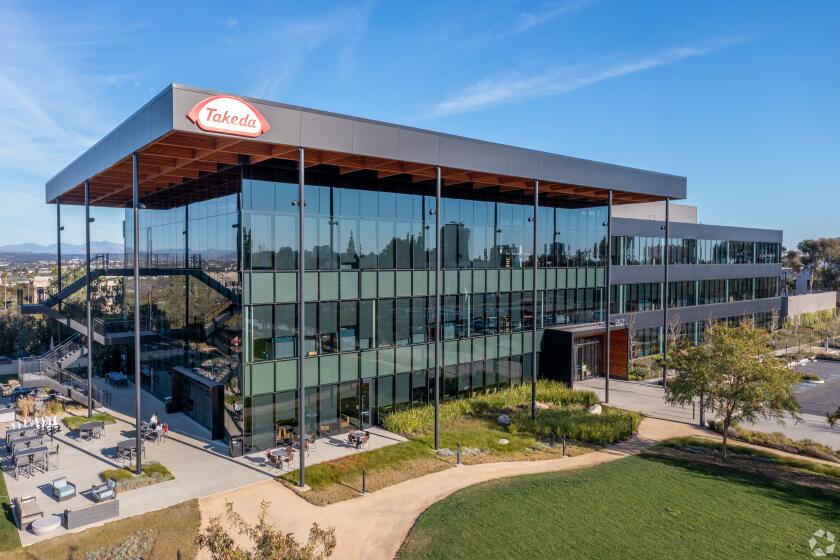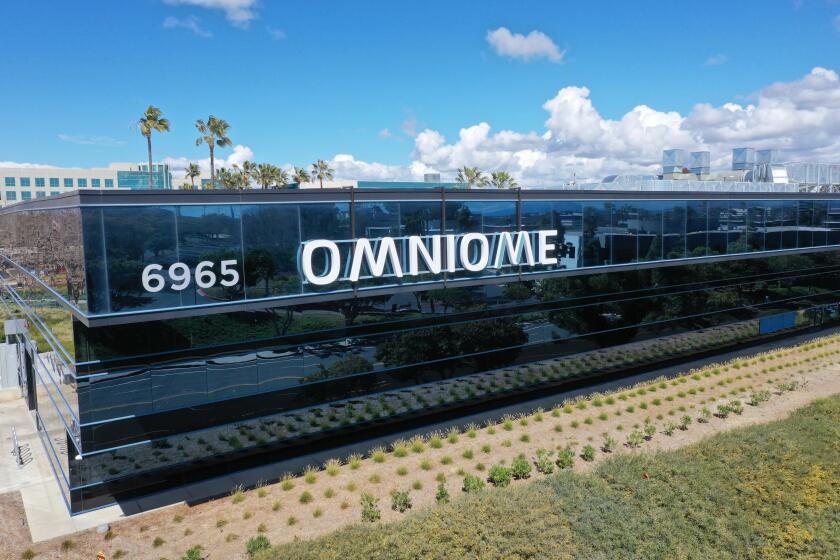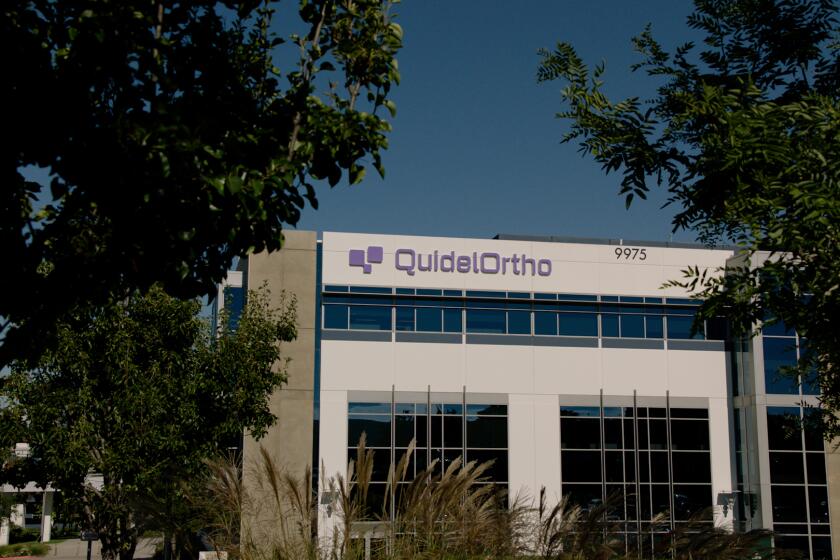Cancer cells made to kill each other
Antibody turns leukemia cells into leukemia-killing immune cells
Scientists at The Scripps Research Institute say they have recruited an unexpected ally in the mortal struggle against cancer: The very cells of the cancer itself.
In lab experiments, a team led by Richard Lerner, M.D., turned leukemia cells into normal immune cells with up to 80 percent efficiency. What's more, these "natural killer" cells seek out and destroy their unchanged cancerous brethren, the scientists say.
If all goes well, a human clinical trial will be launched next year, Lerner said.
The study is published this week in the Proceedings of the National Academy of Sciences. Lerner is senior author, first author is Kyungmoo Yea. When posted online, it will be available at: j.mp://fratricidins.
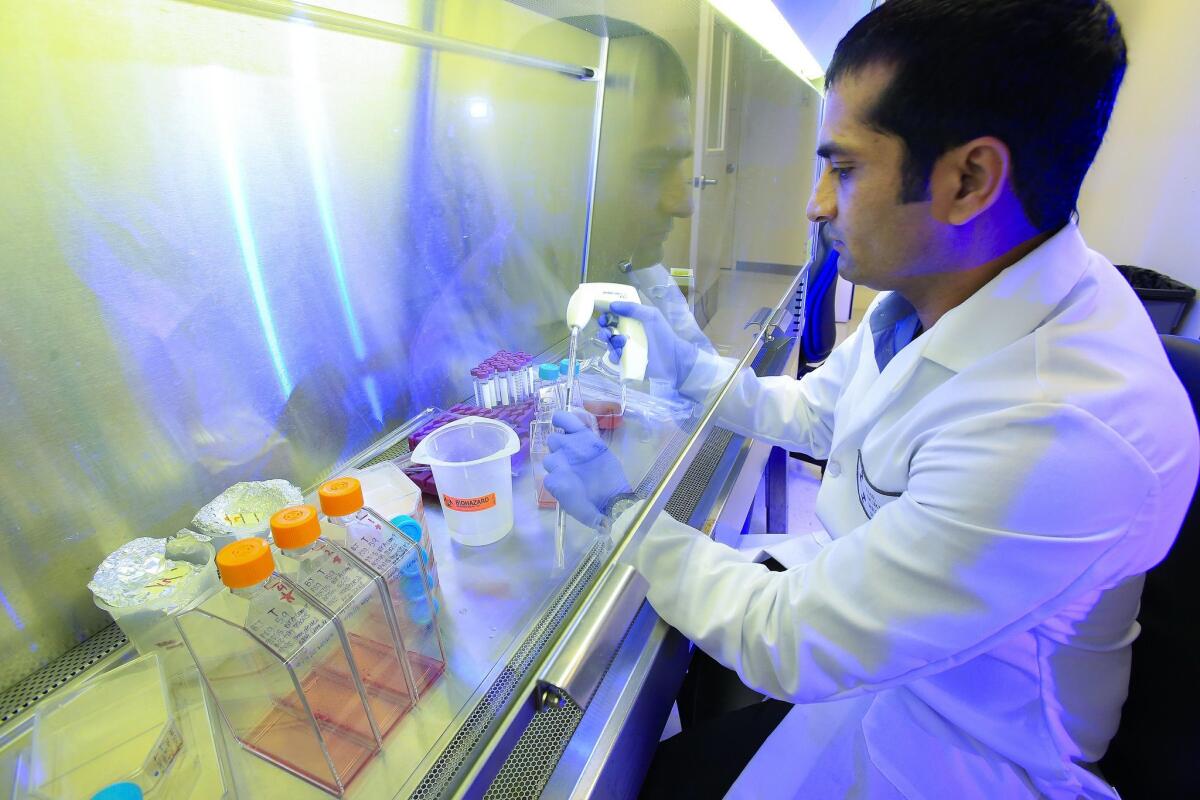
Researchers experimented with cell cultures of acute myeloid leukemia, also called acute myeloblastic leukemia. Using a rare antibody selected from a pool of 100 billion candidates, the team caused the acute myeloblastic leukemia cells to mature, Lerner said. This method may also work with prostate cancer and certain other solid tumors, and such trials are being planned.
A blood cancer researcher not involved with the work said it could prove important for therapy, but needs confirmation, ideally including animal tests.
If Lerner and colleagues are right, they will have invented an entirely new kind of cancer therapy. And it will also represent another milestone in Lerner's research on the unexpected roles antibodies can play in biology.
Noting that the converted cells attack their own kin, Lerner has coined the term "fratricidins," to describe the antibody and other substances that have a similar effect.
The study was supported by the JPB Foundation and Zebra Biologics.
Making cancer grow up
Traditional cancer treatments like surgery, radiation and chemotherapy damage healthy tissue along with the cancer. They also may promote the evolution and survival of tougher cancer cells, which can hide out in the body and reconstitute a tumor from just a single cell.
In theory, educating cancer cells to act normally should be easier on patients who struggle with the toxicity of harsh treatments. And because the cancer cells are not killed, there should be less evolutionary pressure to develop resistance.
Cancer cells are known to resemble immature stem cells in a number of ways, such as using genes normally active only in embryonic stem cells. The cells move around the body in a way normal cells do, and fail to respond to signals that tell them to settle down and grow up into a functional tissue.
If these immature cells can be made to differentiate into normal adult cells, they will no longer dangerous. Lerner said. This is more than a concept, Lerner said, it was demonstrated in another blood cancer, acute promyelocytic leukemia, by Chinese physician-scientist Chen Zhu.
Previous research had revealed the genetic mechanism behind APL, a defect in Vitamin A metabolism. So Zhu's team dosed patients with a variety called tretinoin. In most cases, this induce the leukemic cells to differentiate, sending patients into remission.
Antibody-based therapies, first developed by biotech companies in the 1980s, are common today. With an established infrastructure for developing and manufacturing antibody drugs, testing of this new potential therapy in humans has a well-established path. And further research could uncover small molecules that have the same effect, Lerner said.
Dr. Rafael Bejar, a physician-scientist at UCSD Moores Cancer Center, said the study’s findings could be important, but more research and verification is needed.
"These results are truly intriguing. We await better characterization of how the antibody is working and how the derived cells would function in a living organism," said Bejar, who was not involved in the study. "If what the authors report can be replicated and better understood, it could have important implications for the treatment of acute myeloid leukemia."
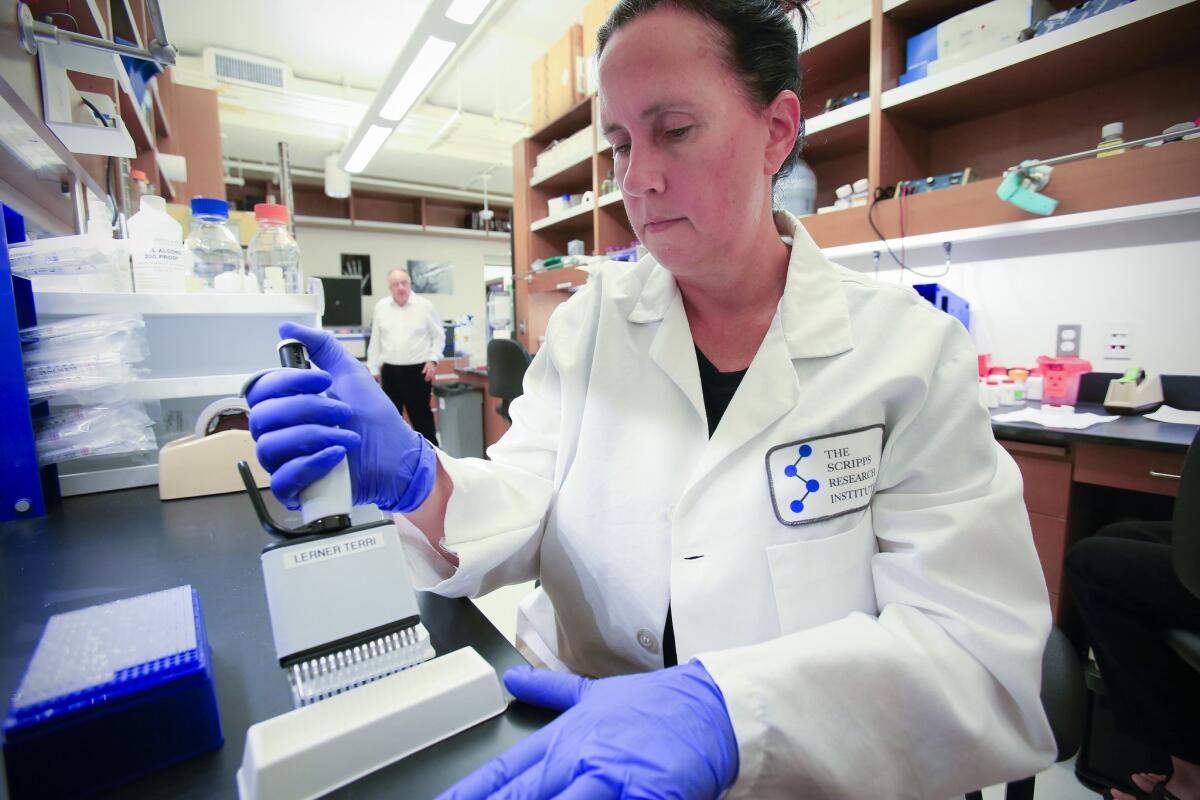
The results could be strengthened by replicating them in a whole animal, Bejar said.
"If turning leukemia cells into mature cells of any kind were all the authors report, it would be a noteworthy finding," Bejar said. "However, the authors go on to claim that the leukemia cells become functional NK cells that actually recognize remaining leukemic cells as abnormal and kill them. This is where the public interest aspect of this story may lie, but this is also the most tentative finding. This effect is shown only in the petri dish."
Lerner said animal models of this disease are tricky to produce, and would probably not add significant useful information.
“We’re trying to go straight into man,” Lerner said. “Of course, we have to do lots of things first, to make sure it’s not harmful. When these cells are converted, they make a lot of bad stuff.”
One way to do the trial would be to administer the antibody into the patients. In that case, very small doses would be used at first, to look for signs of any harm.
Previous experiments with immune therapy have produced dangerous reactions from naturally produced chemicals called cytokines. The substances trigger an immune response that produces even more cytokines, known as a cytokine storm. This complication caused serious illnesses in patients being treated with CAR T cell therapy, in which their own immune cells are genetically engineered to fight their cancer.
Another way would be to extract some of the leukemia cells, convert them in the lab and reinfuse them into the patient. This is the method used with CAR T cell therapy.
“This could supplant all the CAR T cells, if it works,” Lerner said. Conversion to NK cells would be less costly, because there would be no need to perform custom genetic engineering on the patient’s immune cells. Rather, the antibody would be supplied as an off-the-shelf-drug.
Affinity for antibodies
A former president of Scripps Research and a self-described "lab rat," Lerner specializes in finding unconventional uses for antibodies. These large protein molecules are best known for their role in attacking invading microbes and, when they miscarry, the body that made them.
But antibodies can also activate cellular receptors, molecular portals that turn off and off various cell activities. Moreover, antibodies that link to a receptor can cause a far different response than the receptor's normal partner.
In a predecessor study published in 2013, Lerner and colleagues converted bone marrow cells into neuron precursor cells with an antibody. The new study extends that work.
The antibody Lerner's team found was already known to stimulate the receptor for thrombopoietin, which regulates production of platelets and their precursor cells, called megakaryocytes. This receptor is abundant on acute myeloid leukemia cells.
Early testing found that the antibody caused the AML cells to turn into immune cells called dendritic cells. Longer exposure to the antibody, combined with certain cell culturing methods, caused the cells to resemble natural killer cells.
More extensive testing revealed that the cells functioned as NK cells, which stick tendrils into the cells they attack, pumping them full of toxic chemicals. These cells only attacked AML cells, ignoring breast cancer cells.
To get the antibody, researchers started with a library of about 100 billion individual antibodies, Lerner said. These were screened for binding, yielding 100,000 antibodies. These were next selected for function by testing with reporter cells, genetically engineered so they become fluorescent if a functional antibody is expressed.
The entire process took about six months from start to finish, Lerner said. Rapid advances in technology have since cut down the time needed.
"But today? We would do the same thing in a few weeks," he said.
Get U-T Business in your inbox on Mondays
Get ready for your week with the week’s top business stories from San Diego and California, in your inbox Monday mornings.
You may occasionally receive promotional content from the San Diego Union-Tribune.


